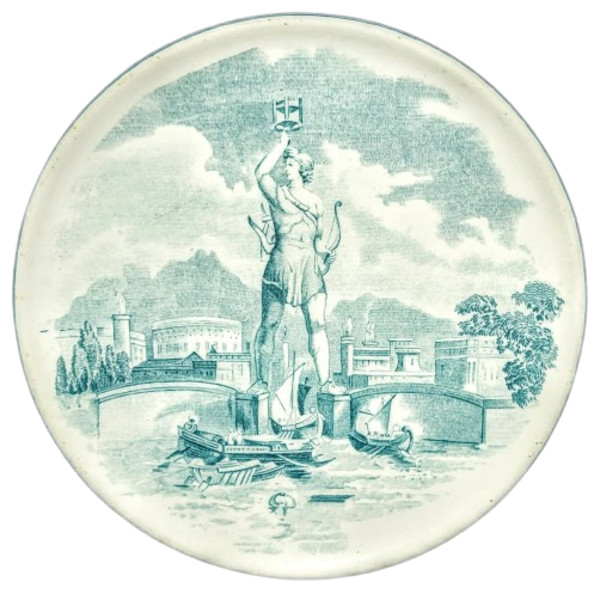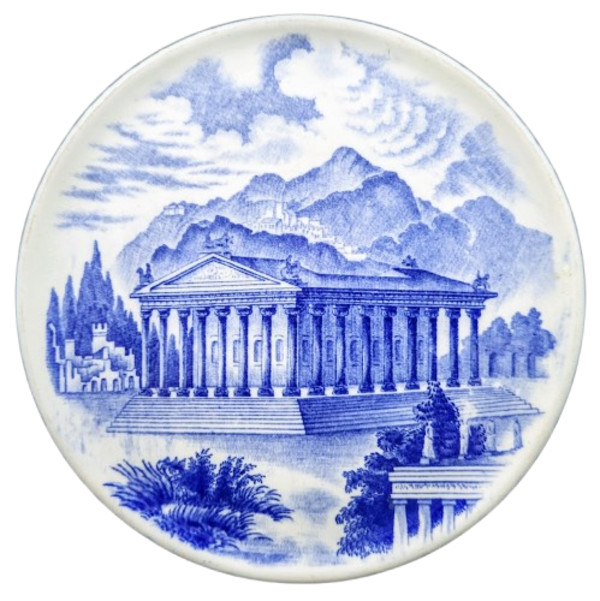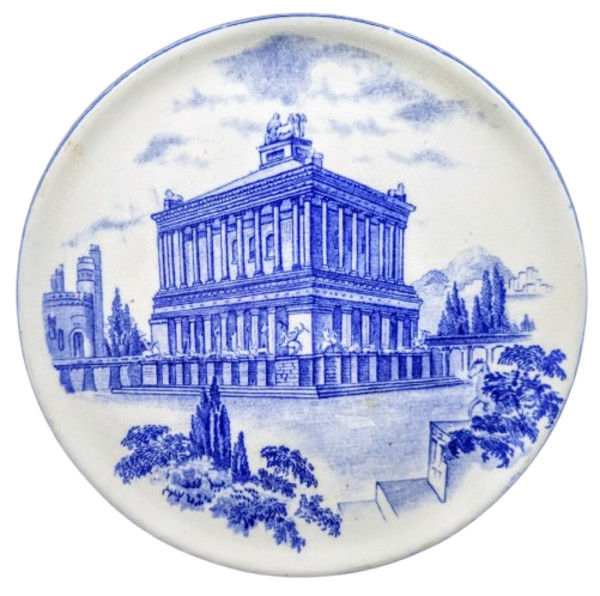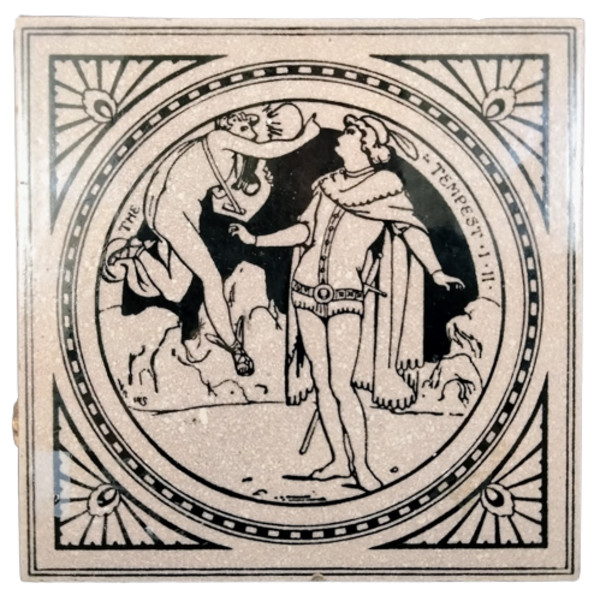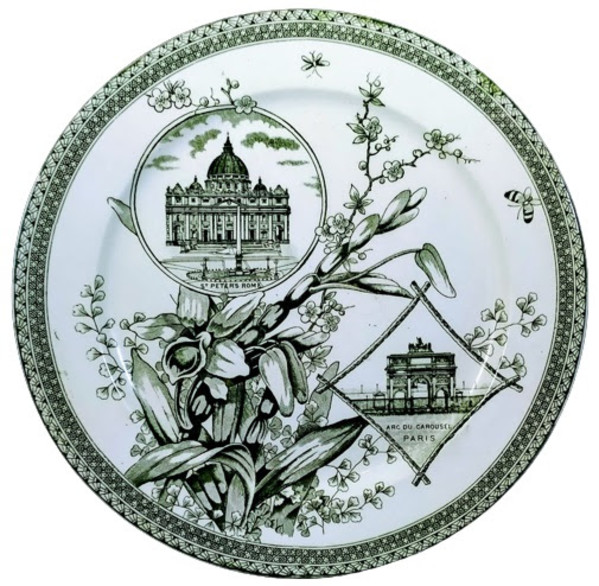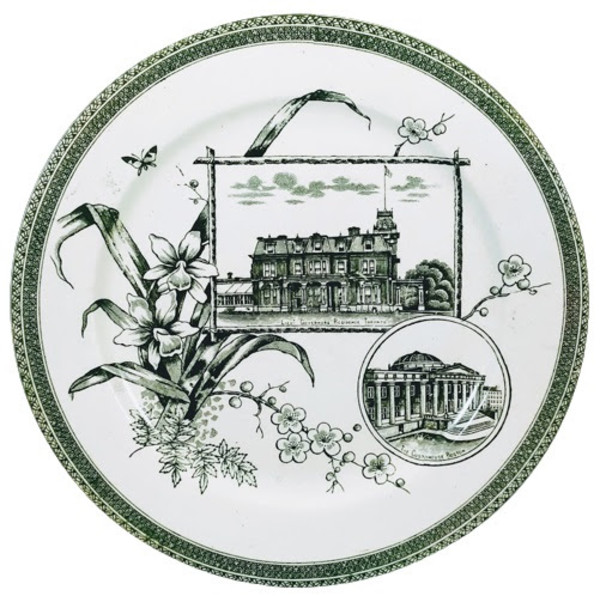- Johnson Bros.
- The Oregon Plate, c. 1950-1980
- Earthenware
-
Not For Sale
Plate, brown transfer with polychrome clobbering. Printed maker's mark for Johnson Bros. Printed retailer's mark for Meier & Frank Co. This commemorative plate features significant moments and places in the state of Oregon, USA's history. The state seal appears at the top laid over the state flower (Oregon grape) with the state animal (beaver) to the left. Following clockwise around the border, the following vignettes appear: the State Capitol building in Salem; a roundel with a portrait of the explorer William Clark; Bonneville Dam on the Columbia River; a sternwheeler on the Columbia River framed on either side by the state fish (Chinook salmon) and the state bird (Western meadowlark); Crater Lake; a roundel with a portrait of the explorer Meriwether Lewis; and 20th-century Native Americans net fishing off platforms on the Columbia River. The well features an early image of Oregon City, which was the terminus of the Oregon Trail.
There were four 'Johnson Brothers' - Alfred, Frederick, Henry and Robert - sons of Robert Johnson and grandsons of the famous Meakin pottery family lineage. In 1883 Alfred and Frederick took over the Charles Street Works, Hanley from Pankhurst & Co. and began manufacturing durable earthenware, which they called 'White Granite.' In 1888 their brother Henry joined the business. In addition to manufacturing white ware, they began producing under-glaze transferware for which they became famous. Due to the increased demand for pottery in North America, they opened up additional factories. The Trent Potteries was opened in 1896, fronting Eastwood Road and the Cauldon Canal - these works produced sanitary ware. By 1898, they had five factories in Stoke-on-Trent - Charles Street Works, the Imperial Works, the Hanley Works & Trent Works - all in Hanley and the Scotia Road works in the nearby town of Tunstall. Around 1896 Robert Johnson moved to New York to promote the business in the USA. Johnson Brothers tableware became very popular in America due to its inexpensive, durable and well finished product. Johnson Brothers continued its growth in the tableware industry, exporting large quantities to North America and the colonial markets. By the mid-1940s Johnson Brothers was one of the world's largest manufacturers of earthenware and ironstone china. In 1968, to offer access to even larger markets, and to remain competitive, Johnson Brothers joined the Wedgwood Group. Several other manufacturers including Meakin (the Johnson Brother's maternal grandfather's company), Coalport, Adams, Midwinter, Crown Staffordshire, and Mason's also joined Wedgwood.
- Subject Matter: Tableau
- Collections: British Transferware (1800-1930), Johnson Bros.




